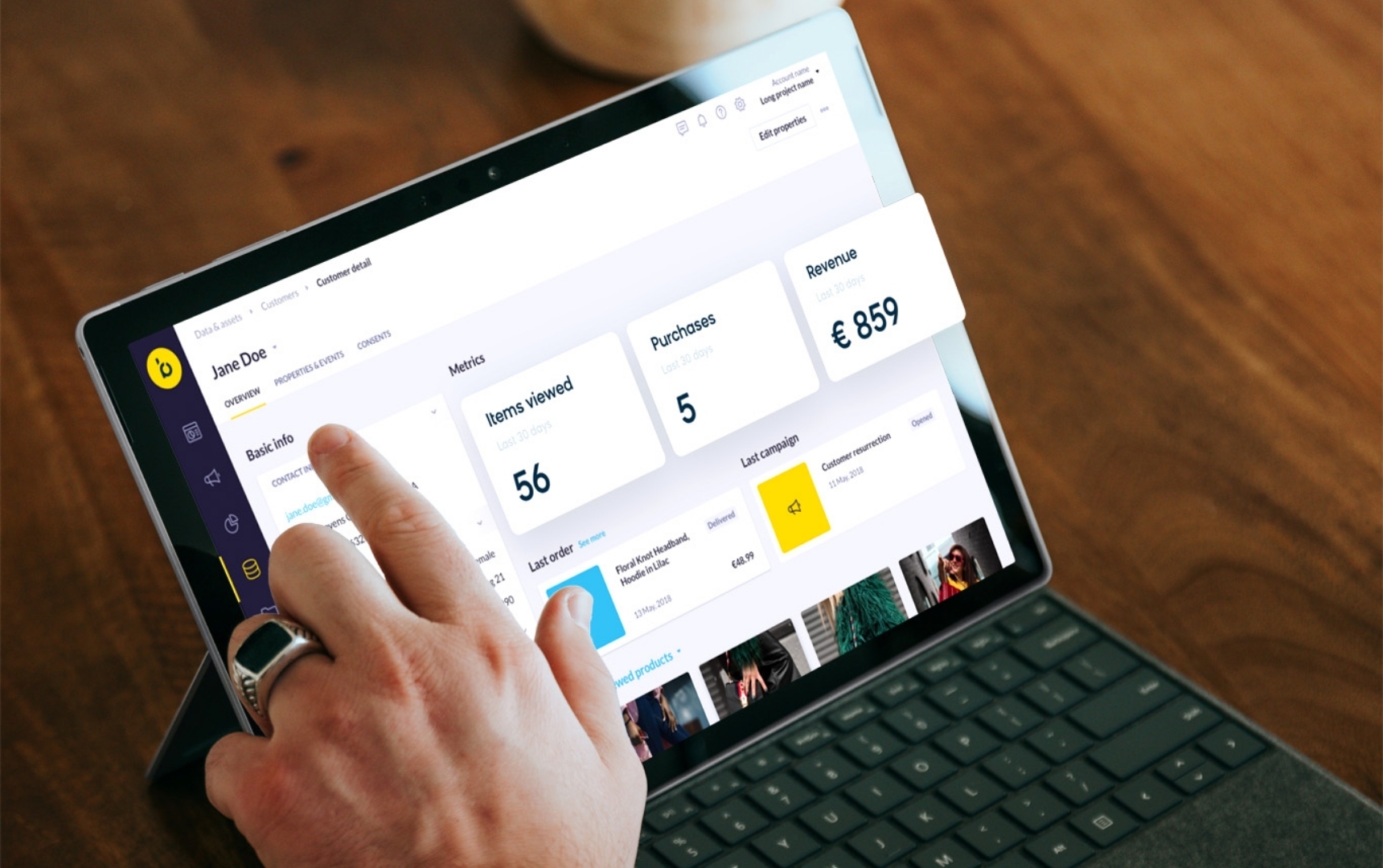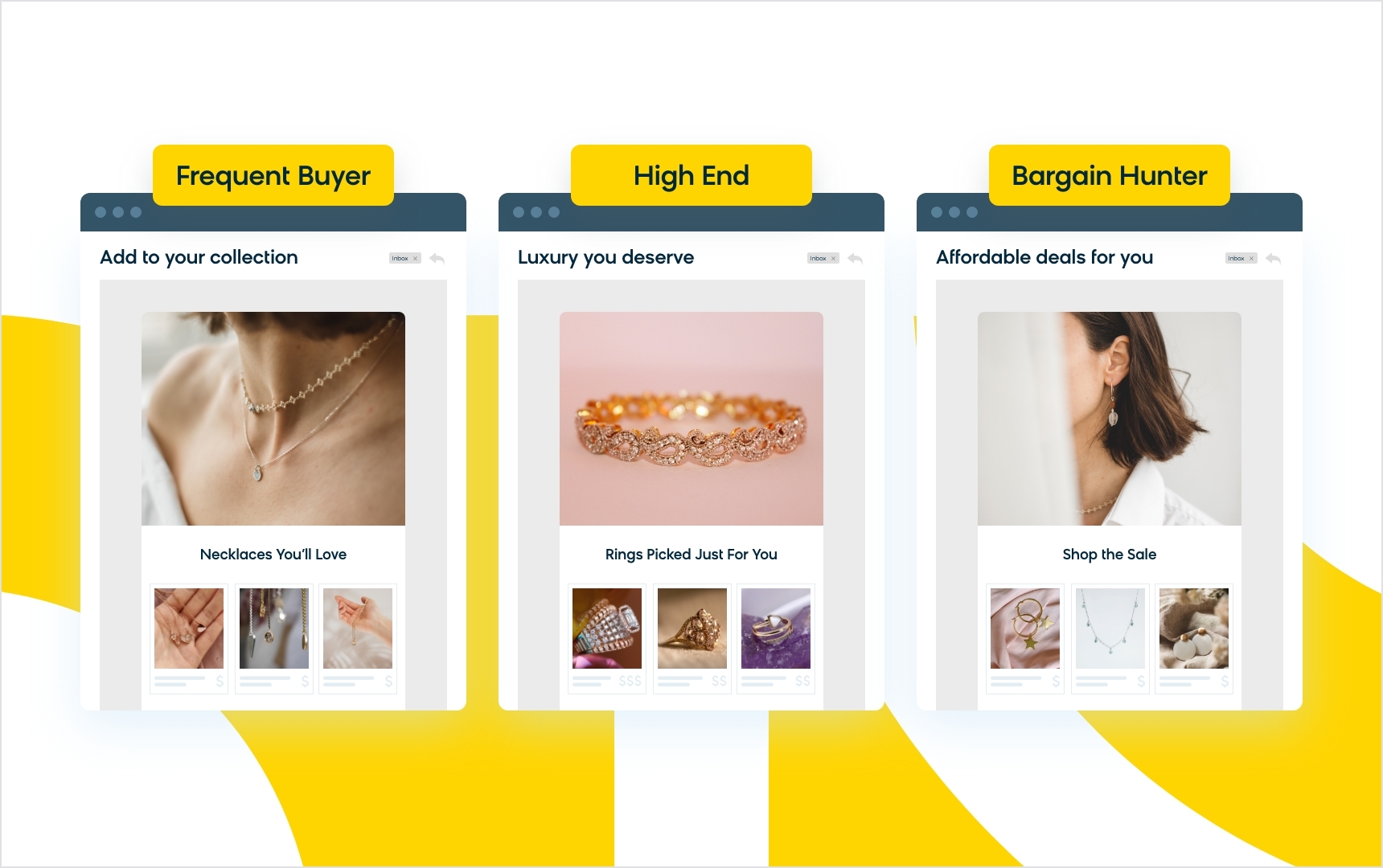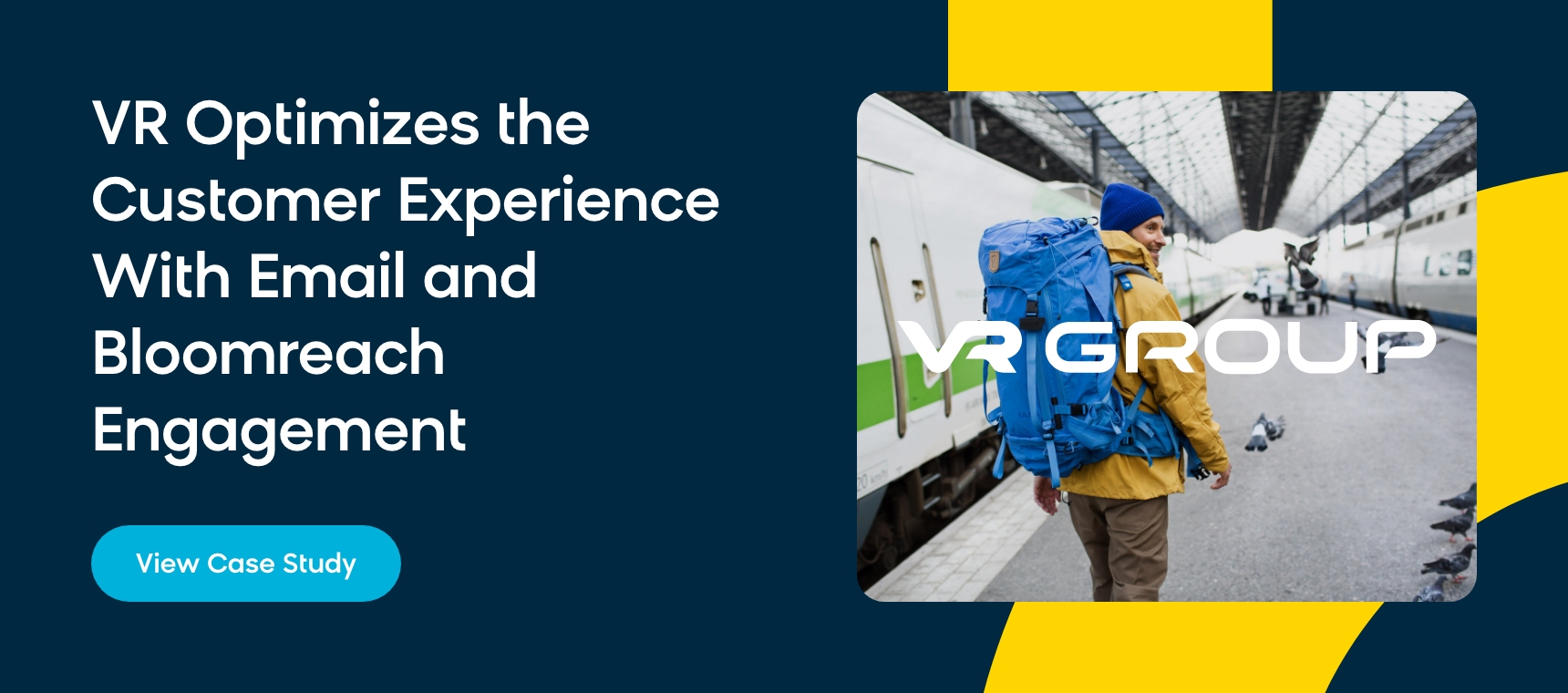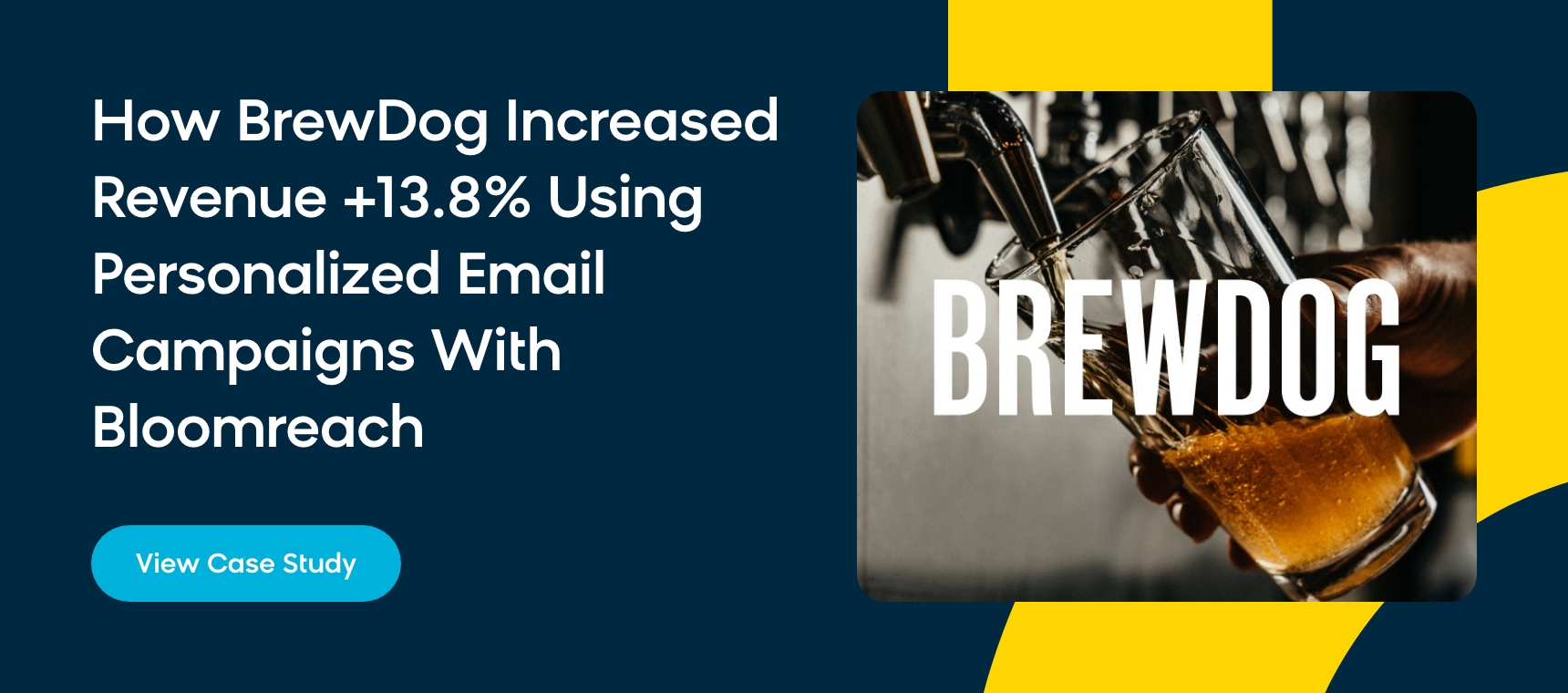From Clicks to Conversions: Maximize ROI With Targeted Email Marketing
By Amelia Woolard
04/22/2024

What do emails, birthday cakes, and Spotify playlists have in common?
They’re all better when they’re made just for you.
Personalization is on the rise among brands hoping to expand their reach, attract new customers, and rake in more sales. Businesses that report rapid growth drive 40% more of their revenue from personalization compared to industry competitors that don’t use personalization tactics.
Targeted email marketing, in particular, offers a powerful avenue to deliver personalized messages, captivating customers with relevant content that speaks directly to their needs and desires.
However, there’s a disconnect between what research tells us about targeted email marketing and what marketers are putting into practice. Only 60% of ecommerce businesses personalize emails based on customer activity.
If you’re not targeting your email messages, you’re leaving a lot of revenue on the table and limiting your ability to connect with your target audience.
In this post, we’ll make a compelling case for how targeted email marketing can benefit your brand. From dissecting successful targeted email marketing campaigns to uncovering cutting-edge strategies, we’ll show you how targeted emails drive customer retention, increase ROI, and keep you competitive in the ecommerce world.
- Targeted emails are a form of email marketing that prioritizes sending personalized marketing messages to subscribers.
- Data is key to successful targeted emails — you’ll want to use information like demographic data, customer behavior, and inactivity to inform your strategy.
- Be sure to use AI to help with creating targeted emails, automating tasks, and delivering a more relevant message at just the right time.
What Is Targeted Email Marketing?
Targeted email marketing is a concept that focuses on sending personalized and relevant email messages to a specific segment of your audience. This method leverages detailed information about your subscribers, such as their demographics, browsing behavior, previous purchases, and engagement history, to craft emails that cater specifically to their interests and needs.
By segmenting your audience based on these criteria, you can create more meaningful and effective communications that resonate with each group. This personalized approach not only enhances the user experience but also significantly increases the likelihood of conversions, as the content feels tailor-made for the recipient. It's an empowered way of communicating, ensuring that your messages are not just seen but also felt and acted upon, fostering a stronger connection between your brand and its audience.
In essence, targeted email marketing is about recognizing the unique preferences and behaviors of your audience segments and using that insight to send the right message, to the right person, at the right time. It's confident and smart marketing that speaks directly to the individual, making each email not just a broadcast, but a conversation.
Targeted email marketing involves sending personalized email messages to a specific audience. If you’ve ever received an email that made you think, “Wow — this brand really gets me,” you can bet that the company that sent it is practicing targeted email marketing.
Unlike traditional email campaigns, which send a blanket message to everyone on a contact list, a targeted email marketing campaign focuses on delivering relevant content to recipients who are most likely to be interested in the products or services being promoted.

Targeted email marketing provides a powerful and cost-effective way for businesses to engage with audiences individually. By personalizing your email message and delivery tactics, you'll drive higher conversion rates and build long-lasting relationships with your target customers.
What Are The Benefits of a Targeted Email Marketing Campaign?
There are several benefits of targeted email marketing. With targeted emails, you can offer a high level of personalization by tailoring the content to your recipient's preferences and needs.
When your email marketing messages align with recipients' interests, they are more likely to open the email, click on links, or take another desired action. This increases the chances of conversion and maximizes the ROI of email marketing campaigns. Plus, if your customers are receiving relevant emails, they’re also much less likely to file spam reports, which can hurt your brand reputation.
Targeted emails are also a good fit for automation and behavior-based triggers. Marketers can set up automated workflows triggered by a specific action or event and then send a targeted email encouraging the customer to complete the purchase, leave a review, or another intended action. Using automation to drive actions like this is a great way to do more with your current team and better leverage data.
Speaking of data, targeted email marketing uses it to fine-tune your communication attempts and increase efficiency over time. This is especially true when you test and analyze the results of targeted email campaigns, then use that intel to inform future email marketing efforts.
What To Target With Your Emails
Now that you know what targeted email campaigns are, let's explore the key elements to consider when deciding what to target with your marketing emails.

Demographics
Demographic data is important in marketing because it helps your marketing team better understand your specific consumer’s characteristics, behaviors, and preferences. When you have that intel, you can use it to provide subscribers with more engaging content.
There are countless ways to target audiences based on demographics, including:
- Gender. Send emails featuring different styles or product recommendations based on gender preferences.
- Age. Different age groups have different interests and priorities that can be leveraged in your targeted email marketing. For instance, a skincare brand might customize its email content to deliver age-appropriate product recommendations or skincare tips.
- Location. Location-based targeting is useful for businesses with a physical presence or those targeting people in certain geographic areas with information about local events and promotions.
- Income level. If you know your customer’s income bracket, you can use it to create customized offerings, exclusive discounts, and other applicable content for your email marketing campaigns.
Customer Behavior
Take a look at your customer journey, and you’ll see patterns that can be put to good use (i.e., increase conversions and boost your email marketing ROI).
Past purchase behavior can clue you into related items that your existing customers are likely to buy. For example, a swimwear company might target a customer who has recently bought a swimsuit with a beach towel or other warm-weather accessories.
Likewise, tracking liked or frequently viewed items provides valuable data for your email marketing. By understanding which products a customer has shown interest in, marketers can send a targeted email highlighting those items or offering exclusive promotions related to them.
Purchase frequency is another behavior to consider. Analyzing customer purchase frequency gives marketers valuable insights that help them strategically time targeted emails. For instance, you might send a personalized email with a special discount code to a customer who hasn't purchased in a while. Do this and you’ll encourage customers to return and buy something new.

Inactivity
While inactive customers may dampen a marketer’s morale, there’s a silver lining: A targeted email provides an opportunity to creatively reengage them.
Inactivity targeting is especially valuable in an abandoned cart scenario. When a customer adds items to their shopping cart but fails to check out, your business misses out on that potential sale.
Fortunately, you can encourage a completed sale by sending customized emails to these customers, reminding them of the items left behind and offering incentives such as discounts or free shipping to encourage a completed purchase.
Additionally, identifying customers who have shown a lack of engagement can be an opportunity for targeted email campaigns. If your subscriber isn’t opening emails or visiting your website or app, consider sending a reengagement email to these inactive subscribers. These emails may include exclusive offers, personalized recommendations, or exciting updates that reignite interest in the brand.
Targeted Email Campaign Best Practices
When it comes to running successful targeted email campaigns, several best practices can elevate your efforts and maximize results. These tried-and-true techniques will make your targeted email marketing campaigns truly shine.
Create the Right Audience Segments
To effectively target your audience, it’s essential that you first segment your email list based on appropriate criteria.
Start by analyzing your customer data and identifying common characteristics, such as demographics, purchase history, interests, or engagement levels. Use this data to create distinct segments that enable personalized and relevant messaging. The more specific your segments, the better you can tailor your content to meet the needs of each customer group.

Once you’ve created your audience segmentation, be sure to continuously update and refine them based on what you learn with every email campaign. Regularly analyze the performance of your email campaigns for each segment to better understand which messages elicit a positive response and which require adjustments.
Use Your Collected Customer Data
Using your collected customer data is a crucial best practice when it comes to targeted email campaigns. The information you’ve gathered about your target customers holds valuable insights that can significantly enhance the strength of your targeted email marketing efforts.
Additionally, customer data gives you the intel you need to introduce dynamic content into your email marketing strategy. With dynamic content, you can customize your emails with targeted messaging, personalized product recommendations, and exclusive offers. By doing so, you'll ensure that each recipient receives an email experience that’s highly relevant and likely to drive engagement with your brand.
Personalize the Content
Your customer isn’t “one size fits all,” so why should your email marketing be? Personalized content puts the “targeted” in “targeted email marketing” and creates a more meaningful experience for each recipient.
There are many ways to personalize your email marketing campaigns. You could:
- Address your recipients by name in the email. This simple touch establishes a connection with the reader.
- Use customer data to tailor your email message so that it’s unique to the recipient’s interests and needs. Recommend products or services based on previous purchases or provide targeted offers that align with customer preferences.
- Send emails based on customer actions or events. For instance, if a customer regularly buys pet food, you can send them a reminder email with a personalized offer when it’s about time to buy more.

Test and Optimize
By continually experimenting, measuring performance, and making data-driven optimizations, you can refine your email campaigns to better resonate with your audience and achieve higher engagement and conversion rates.
A/B testing is a common approach to optimize email campaigns. It involves testing two or more variations of an email against each other to determine which performs better. You can test different elements such as subject lines, email copy, visuals, calls to action, or even the timing of the email send. By analyzing the results, you can identify the most effective elements and make informed decisions to optimize future emails.
Don’t forget about your key performance metrics. Take note of open rates, click-through rates, conversion rates, unsubscribe rates, and any other metrics that are relevant to your marketing goals. These metrics provide insights into how your audience engages with your email marketing and can identify areas for improvement. For example, if your open rates are low, you may need to optimize your emails with more compelling subject lines or improved email previews.
Automate the Process To Scale Up
As with other parts of your email marketing strategy, automation can be a real game-changer regarding targeted emails. Automating your process streamlines your targeted email marketing approach, from segmenting your audience to sending customized emails, so you can reach a larger audience without losing the personal touch that attracted your customers in the first place.
Automation can help you with all of the strategies we’ve discussed in this section, including segmentation. Automated workflows make it easy for even the smallest marketing teams to segment email subscribers based on demographics, purchase history, or engagement levels.
Additionally, automation allows you to send a targeted email based on specific triggers or events. You can automate an email to send when it’s a customer’s birthday or if the shopper reaches a particular milestone, like completing a 10th purchase.

By automating these processes, you can ensure that the right message is delivered at the right time, maximizing the chances of engagement and conversion. Best of all, you don’t have to mobilize your team to do this manually — automation takes care of it for you.
Automation can even clean your email lists. Well-pruned send lists are the secret behind winning email campaigns. Use automation to manage opt-outs and bounces or update contact information. Clean your email list regularly, and you’ll improve your email deliverability and minimize the odds that you’ll send emails to incorrect or inactive addresses.
Take Advantage of AI
If you really want to drive email marketing success (and loyal customers), you’ll want to turn to artificial intelligence (AI). With the power of AI, especially if it’s already built into your email marketing tool, you’ll be able to create targeted email marketing campaigns that are relevant to each subscriber.
This is because AI can determine — in real time — the best messaging and recommendations to send to any given person based on their demographics, preferences, interactions, and other customer information. As a result, it can greatly speed up and optimize all of the other best practices mentioned before this (segmentation, personalization, testing, automation, etc.), making the process of creating targeted email campaigns a breeze.
For example, you can use AI to automatically send a targeted email marketing campaign when it’s almost time for a customer to restock their pet food supply. AI can also automatically determine the best time to send emails for opens or clicks. In short, AI’s ability to process millions of data points in an instant makes it a must if you don’t want to leave revenue on the table.

Targeted Email Campaign Examples
Unlock the power and potential of targeted email campaigns by exploring real-world success stories. Listed below are three Bloomreach customers who have exceeded their sales goals with targeted emails.
VR
VR, the leading passenger train service provider in Finland, needed a way to enhance the customer experience and optimize its digital channels in the competitive transportation market. Recognizing the importance of personalization and data-driven strategies, VR implemented Bloomreach Engagement to revolutionize its customer communications.
By leveraging customer data and a powerful email marketing platform, VR now delivers personalized email campaigns to segmented groups. This shift resulted in a remarkable 20% increase in email open rates and a 30% boost in revenue among customers who receive emails from the brand.
Bloomreach Engagement's user-friendly interface helps VR effortlessly create target groups and evaluate data. These results validate VR's commitment to delivering an exceptional customer journey across all channels and solidify its position as a leader in the transportation industry.
Oliver Bonas
Oliver Bonas, a premier British lifestyle retailer, wanted an extensive customer database that could offer insights into previous purchases, site activity, and more. They correctly assumed that obtaining a “single customer view" would enhance the brand’s targeted email marketing strategy and improve customer communications.
To achieve this, Oliver Bonas implemented Bloomreach Engagement on the Google Cloud Platform. This tool helps the Oliver Bonas team create targeted emails and gather comprehensive customer profiles with real-time updates. The new emails catered to different customer segments, effectively targeting and retargeting audiences. The unified data collected through Bloomreach's email marketing platform facilitated connected customer experiences and allowed customers to manage their preferences through an email preference center.
As a result, Oliver Bonas experienced exponential growth in email click-through rates and significantly increased revenue and conversions. The success of Bloomreach's solution is evident through the business's astounding 762% increase in revenue.
BrewDog
BrewDog is a Scottish brewery with a large presence across the UK and a growing influence in Germany, the US, and Australia. Like many other growing brands, BrewDog sought a way to boost clicks, conversions, and revenue through targeted email marketing.
With Bloomreach Engagement, BrewDog harnessed intelligent data-driven email campaigns to enhance key metrics and expand its global brand presence. In collaboration with Bloomreach partner Voxwise, BrewDog conducted successful use cases, including a split test where 40,000 shoppers received personalized emails based on their customer data, and the other half received generic emails.
The results were remarkable, with the personalized email recipients showing a 15.6% higher click rate and 11.5% higher conversion rate, as well as generating 13.8% more revenue when compared to those who received generic emails. This demonstrates the power of personalized data in driving customer engagement and ultimately boosting revenue for BrewDog.
Send Targeted Emails That Convert With Bloomreach Engagement
Targeted email marketing services can make a huge difference in today's crowded digital landscape. Bloomreach Engagement is the right solution you need to have an effective targeted email marketing strategy.
With Bloomreach Engagement, you can deliver email content that speaks directly to your customers' needs and desires, captivating them with relevant offers and recommendations. Our email marketing platform is powered by Loomi, our ecommerce AI, and empowers you to easily create targeted email campaigns that reach your audience when they’re most likely to open them, resulting in increased revenue, greater average order value, and a surge in conversions.
Bloomreach Engagement is the ultimate email marketing platform to send targeted emails that help your business prosper in the digital world. Find out how Bloomreach Engagement can simplify targeted email marketing for your team.
Found this useful? Subscribe to our newsletter or share it.








